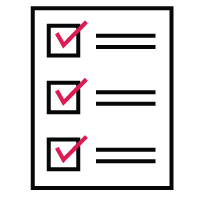You Need Tools for Transformation–But That’s Not All
I have something to admit: I was that coach.
I told people I was a tool agnostic coach because I didn’t understand the value of leveraging the best workflow management tools. Luckily for me, I learned, and the results are cool. In this quick read, I’ll explain why tooling can be such a powerful force in your transformation, and discuss what to consider when deciding what technologies enable digital transformation for your organization.
The moment I learned something was missing
For decades, organizations in both the Manufacturing and Software industries have been working to transform to better ways of working. These transformations come in multiple forms:
- Six Sigma / Lean
- Agile ways of working
- Business Agility
- Push to a Product Organization
- Digital Transformation
- …and more
I have spent much of my career successfully supporting organizations through this change—defining new ways of working, supporting new methods of communication and collaboration, and guiding people through change.
In recent years, how we look at these transformations have fundamentally changed.
- Workers are tired of change. We need new behavior drivers to motivate the organization.
- Organizations are sick of single solution frameworks and mindsets. They want change focused on outcomes.
- The world has accepted that change is the new norm to stay ahead in the competitive market. If change is a competitive advantage, then we need to be mindful of what and why we change.
- Leaders need data to make decisions. Due to the fast pace of change, more real time data is needed to support these decisions.
- These days, transformations need to be more holistic, comprising Agile, Digital, and even AI.
Early in my career, I spoke to organizations about outcomes, but we never followed through to validate those outcomes. Looking back now, I see this approach resulted in half the benefit it should have. We did not validate those outcomes because we did not prioritize data and tooling as a competitive advantage during a transformation. Today, I’m convinced that implementing workflow management tooling as a part of your transformation is essential for success.
This being established, let’s dive into what this means and what you should consider when implementing a tooling strategy.
Start with why, define the approach, and validate the outcomes

- Can you turn us into a product-led organization?
- Can you help us implement SAFe or Scrum at Scale?
- Can you support our use of OKRs (Objectives and Key Results)?
My answer… Yes, but why do you want to do this? Further, what pains are you facing and what outcomes are you hoping to achieve? Surprisingly, many organizations do not know the answers to these questions. And sometimes, when they cannot find the answer, they want to start over completely. But that won’t help.
They don’t know these answers because they do not have the data they need.
So, before we jump into a framework, let’s begin by
- Creating a high-level process and data value stream to understand how things flow through the organization
- Educating the organization’s executives and leaders on what is possible by establishing new ways of working
- Establishing expected outcomes and key results for the organization
- Setting the path with a roadmap for achieving those key results, not compliance with a framework
- Setting a cadence to measure the key results so we can build in continuous improvement
The key takeaway that fundamentally changed my approach to transformation is this: Organizations must establish the results they hope to achieve and enable change to reach those results, rather than deciding how they expect the organization to function and trying to force change into that frame.
Looking back, this seems so logical. We even thought and spoke about this years ago, but our efforts moved in another direction. I now believe that happened because the market did not have the flow-based tools we have today, and I would argue our modern tools still don’t offer the ideal state.
So, which tool best enables this mindset?
The fact is, there is no perfect workflow management tool or framework. But the right tool can aid you in reaching your objectives. Here are some things I have found to be critical to understanding what tooling solution will best enable your transformation.
- Start by understanding the dashboards you need to validate the organizational results you’re after. Having the end in mind will allow the solution to remain focused on only building what the organization needs and filtering out unnecessary data. This will help you focus on the minimum feature set you need from your tooling solution.
- Establish systems and data that can serve as your single source of truth. There will be multiple tools and data being exchanged across the system. Ensure only the source of truth can be changed, and only by authorized users. This avoids people overriding the data intentionally or accidentally to tell a different story.
- Different users will want different tools based on what they do and how they do it. Do not assume that one tool can support OKRs, create and manage a product roadmap, manage user stories, and support your help desk. All those users have unique personas and will need unique features to do their work successfully. Pushing the output from those different tools to a single tool will support the organization’s source of truth.
- One tool will not magically solve your problems. Your organization is a large, complex, living thing. Multiple tools will need to come together to provide the insights needed. Establish an enterprise architecture for how tools will exchange data. Leveraging cloud-based tools and tool integration solutions will be essential to your enterprise solution.
- Do not forget about communication and collaboration. The tooling is not just about work management and flow-based systems. The users will need an integrated collaboration feature to support them, especially as they work more in a remote and hybrid mode.
In conclusion, don’t be that coach. Or, for that matter, that organization. Don’t ignore tooling as a vital piece of the transformation puzzle. And, at the same time, don’t focus on trying to find the perfect single tooling solution to solve all your problems. Instead, approach your transformation from the standpoint of objectives and results. And use the unique tool stack that best guides you to those results.



